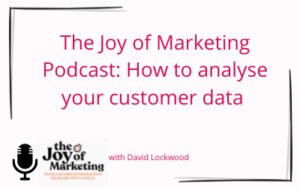Even for those who have done their utmost to prepare for Spring/Summer 2021, the impact that Brexit might have on their business is becoming a real concern for many.
In its latest report on the preparedness of the UK border as we leave the European Union, the National Audit Office (NAO) claims crucial IT systems have yet to be tested; there is a lack of transit areas for goods vehicles; and authorities haven’t yet done enough to make sure there will be sufficient customs agents vital to the smooth running of border controls come January.
In our most recent discussion with 20 multi-channel retailers, we explored the challenges and opportunities being faced as we prepare to fully and finally exit Europe on 31 December 2020.
A question of stock
Many of the retailers we spoke to are bringing forward their orders in a bid to fill their warehouses by the end of December, to pre-empt any difficulties in transporting goods across the border from Europe in January. The NAO has also warned we should expect some lengthy delays in January and February, as both businesses, and border controls, get their systems up and running. For retailers who placed their Spring/Summer 2021 orders back in June or July, the focus now will be to remain flexible around delivery times, as well as manage fluctuating customer demand.
The data dilemma
Despite the likelihood that the UK will be granted ‘adequacy status’ from the EU due to the way in which it already operates under the GDPR, it’s important for retailers not to rest on their laurels when it comes to data protection. In order to sell to European customers, the ICO has confirmed that businesses regularly processing EU data need to appoint a suitable representative based in the European Economic Area (and not a current Data Protection Officer). One grey area concerns those retailers who use an intermediary ecommerce solution to dispatch overseas goods and are therefore unsure whether they need to appoint an in-house representative. Our advice for anyone handling overseas data, however, would be to consult the ICO guidelines well in advance of January.
Navigating the customs minefield
Border control: With the cost of air freight reported to be sky-high this year (including doubling costs from the Far East), many retailers are relying on road and sea freight to import goods. However, having already experienced hold-ups at key entry points such as Southampton, as well as the UK’s largest container port, Felixstowe, several retailers are now concerned about how ready UK ports will be to process European vehicles, especially while staff shortages are rife due to the pandemic. Border delays – coupled with a shortage of UK haulage drivers due to increased demand for local grocery deliveries during lockdown – have already led to failed or missed deliveries for many retailers. And with the arrival of thousands of PPE containers adding to the chaos this week, delays are likely to get worse before they improve.
VAT and excise: Another reason for retailers bringing orders forward is the uncertainty over how much VAT and customs duty will be added to consignments from January. It’s interesting to note that for goods under £135 (the threshold for customs duty liability), the point at which VAT is collected will shift from the point of importation (i.e. entering the UK) to the point of sale, which could be anywhere in the world. The new rules will also put an end to Low Value Consignment Relief, meaning import VAT will now also apply to parcels with a value of £15 or less. In terms of documentation, UK invoicing will inevitably start to mirror that of the US, whereby charges are broken down into product, followed by tax, followed by the total amount. For a couple of retailers, using an intermediary ecommerce solution or automated tax solution removes a great deal of the burden of understanding point of entry or customs tariffs.
Declarations: When it comes to world trade deals, paperwork will inevitably escalate, as a more detailed breakdown is required. For instance, retailers will need to state very clearly the contents of each parcel, the value of each parcel, whether or not tax has been paid, and where and how. Another challenge is how to adjust IT systems to manage the incompatibility between commodity codes on customer declarations for Northern Ireland, which comprise 10 digits compared to the 8 digits required in other countries. Retailers are quite rightly worried about the prospect of increased paperwork, with HMRC predicting the annual number of customs declarations to process rising from 55 million this year to 270 million in 2021.
Couriers: Partnering with multiple couriers is already beginning to prove challenging for some. One retailer uses separate carrier networks in France and Germany, which will adopt different strategies from January, with one intending to simplify paperwork by charging VAT and duty on everything, while the other will apply thresholds. Again, managing the IT around two different systems will be a challenge. Meanwhile, to remove the burden of choosing a courier completely, another retailer has implemented a delivery management service in the lead-up to Brexit which is responsible for negotiating directly with haulage companies, and automatically selects the best rate. Completing one template form then enables the delivery management service to set up individual accounts with each courier.
All in all, there’s a great deal for multi-channel retailers to consider over the next month or so. But by tackling one aspect at a time, and perhaps considering intermediary solutions to ease the burden where applicable, retailers can begin to mitigate the risks and be as prepared as they can for 1 January.




